After successfully integrating Ducalis with Jira Cloud, you can import issues from Jira Cloud for prioritization in Ducalis.
There are three types of filters that you can use to choose the set of issues you want to import:
This article will show you how to use Jira filters to select the issues you want to import.
Using Jira Filters
Choose the instance you want to import issues from. You can:
- Choose from the ones you have already connected.
- Connect a new one. Follow the process of integrating Ducalis with Jira Cloud.
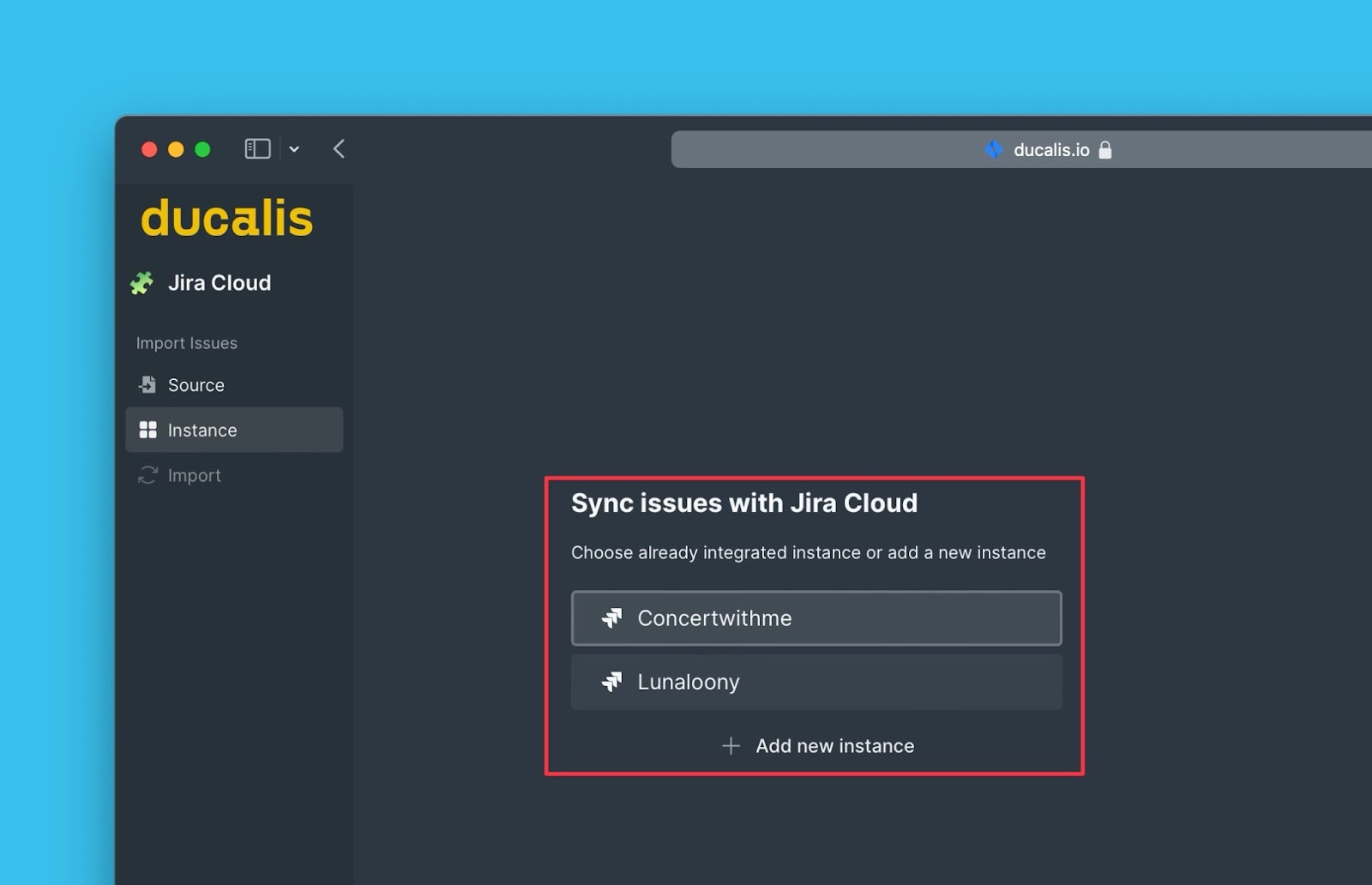
Click Import from [instance] to proceed.
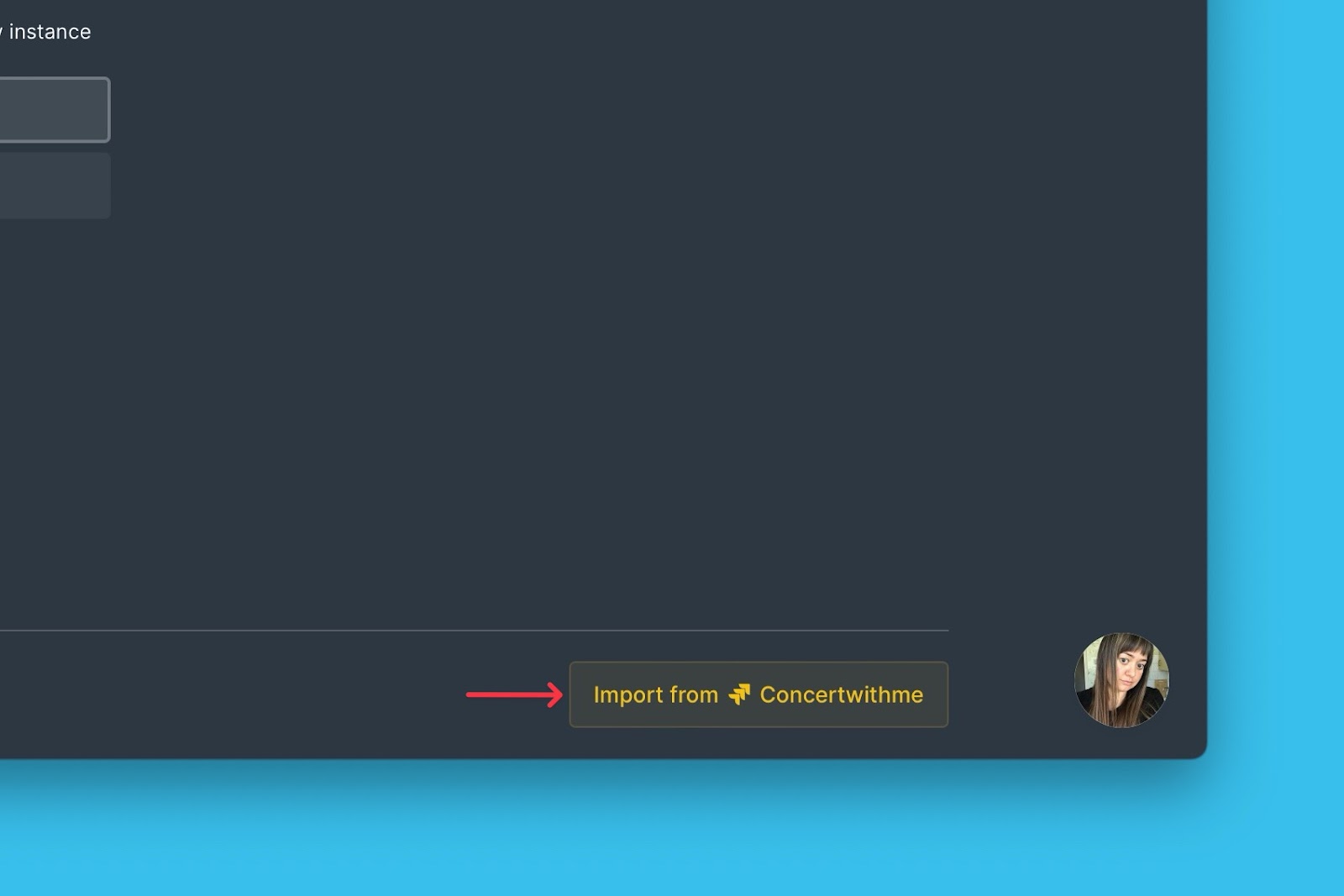
When you get to the Import step, select the Saved Filters option.

From the dropdown list, you can access the list of filters you created and saved in Jira. Select the filter with the issues that you want to add to Ducalis.

If you cannot see a filter because of some recent changes you made, you can click Refresh to update the data before looking for it one more time.

You can see a real-time preview of the issues that fall under the parameters you are selecting.
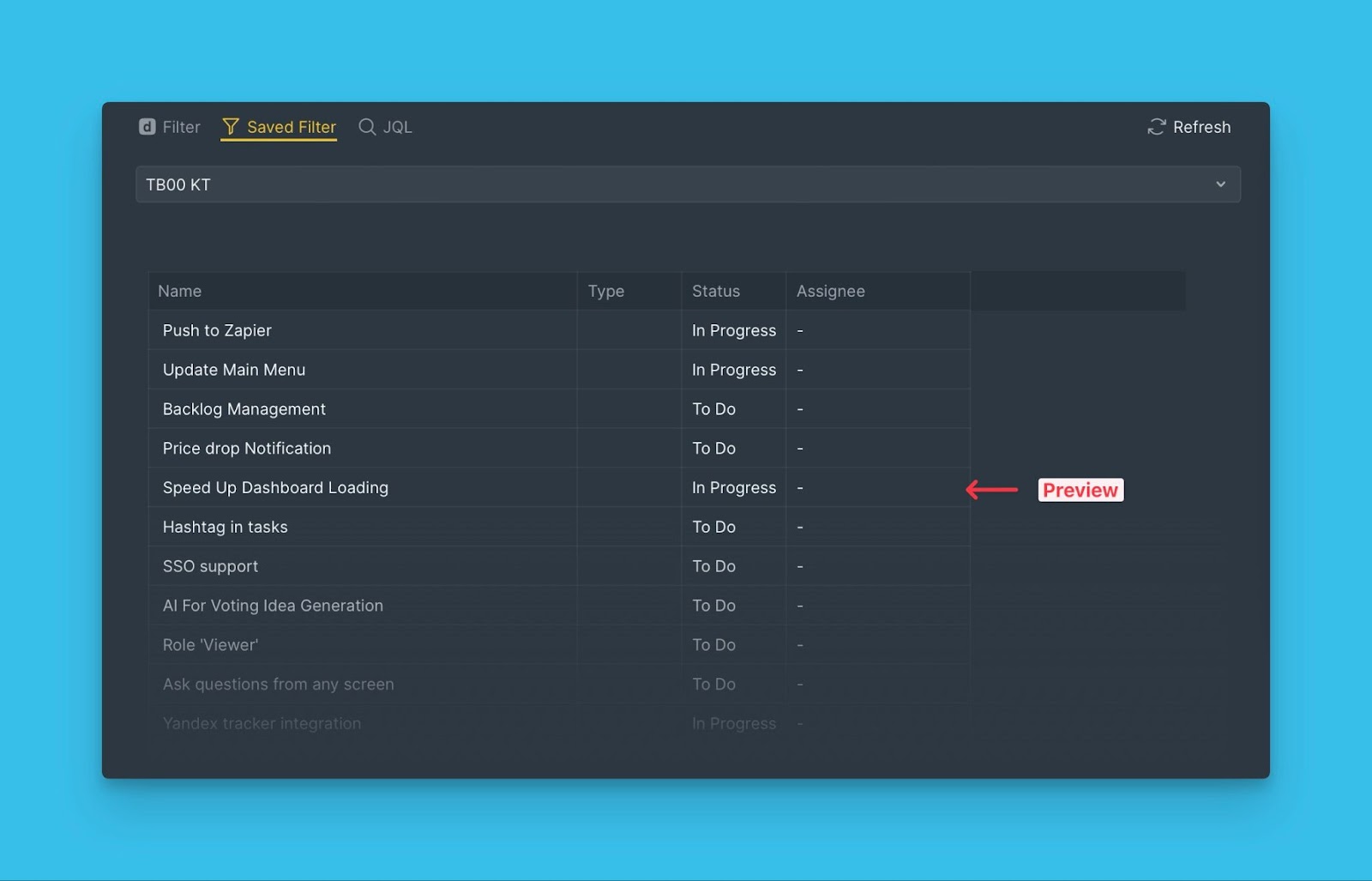
Once everything is ready, click Start Import.
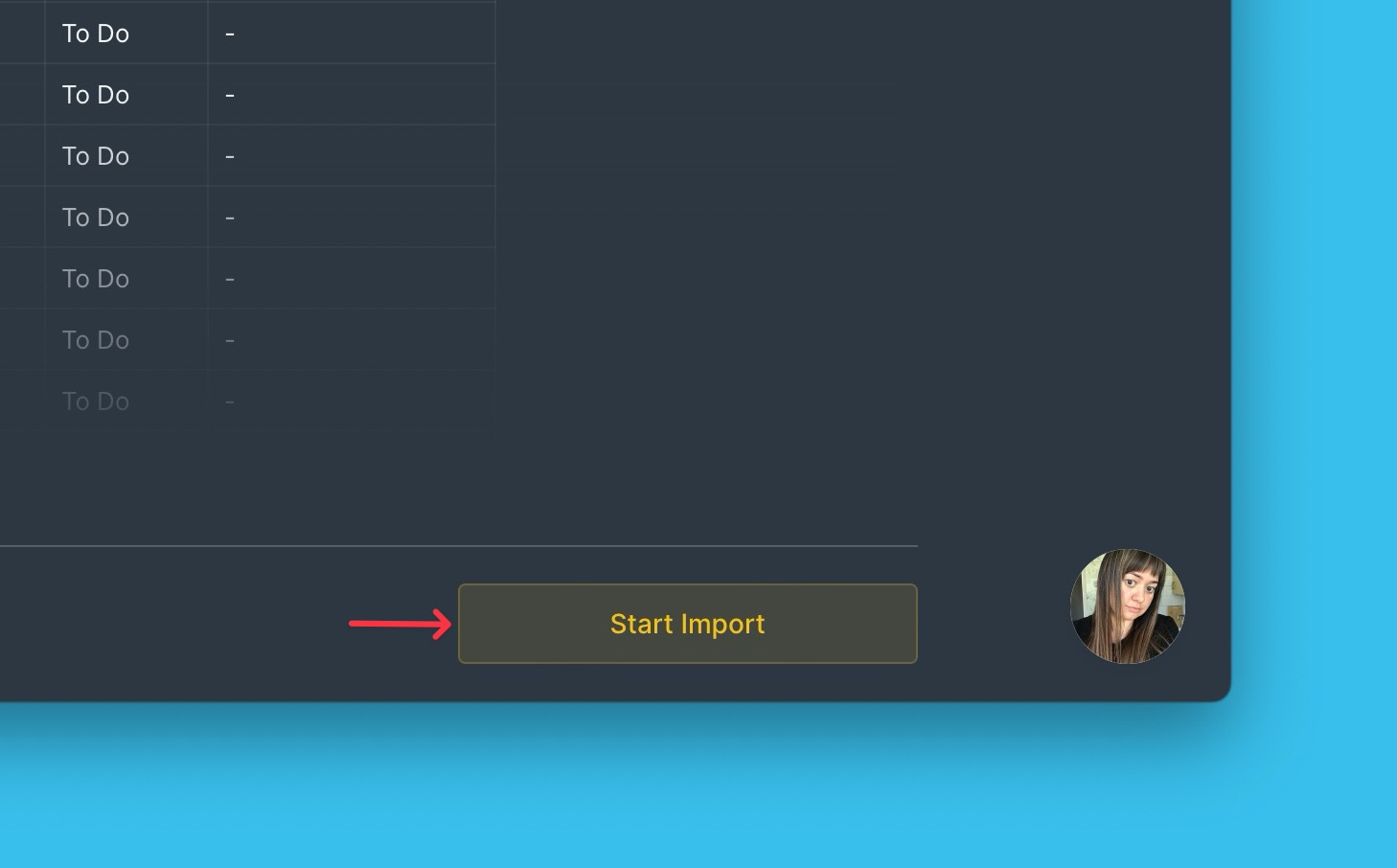
Didn’t Find Some Filters?
If you already have a filter in Jira, but don’t see it when you switch to Jira filters, the problem might be with the filter access status.
Note! For Jira Cloud, the filter access status must be Public, Open, or My Organization.
To check or change the filter status:
- Click Details in the required filter in Jira.
- Edit permissions.
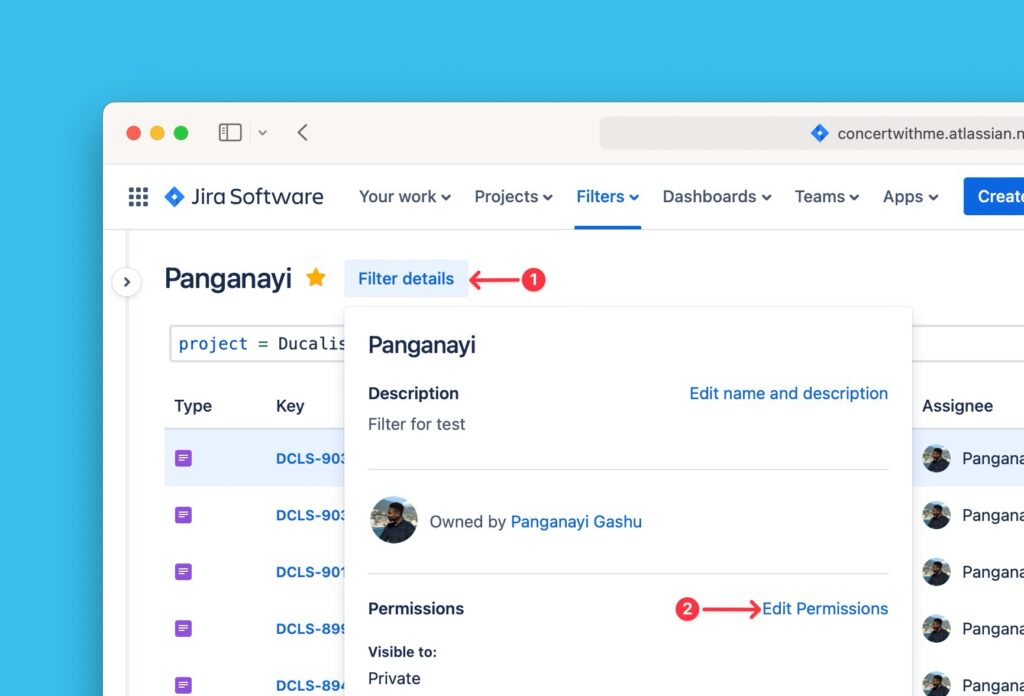
- Change access to Public, Open, or My Organization.
- Click Add.
- Ensure the access status has been added.
- Click Save.
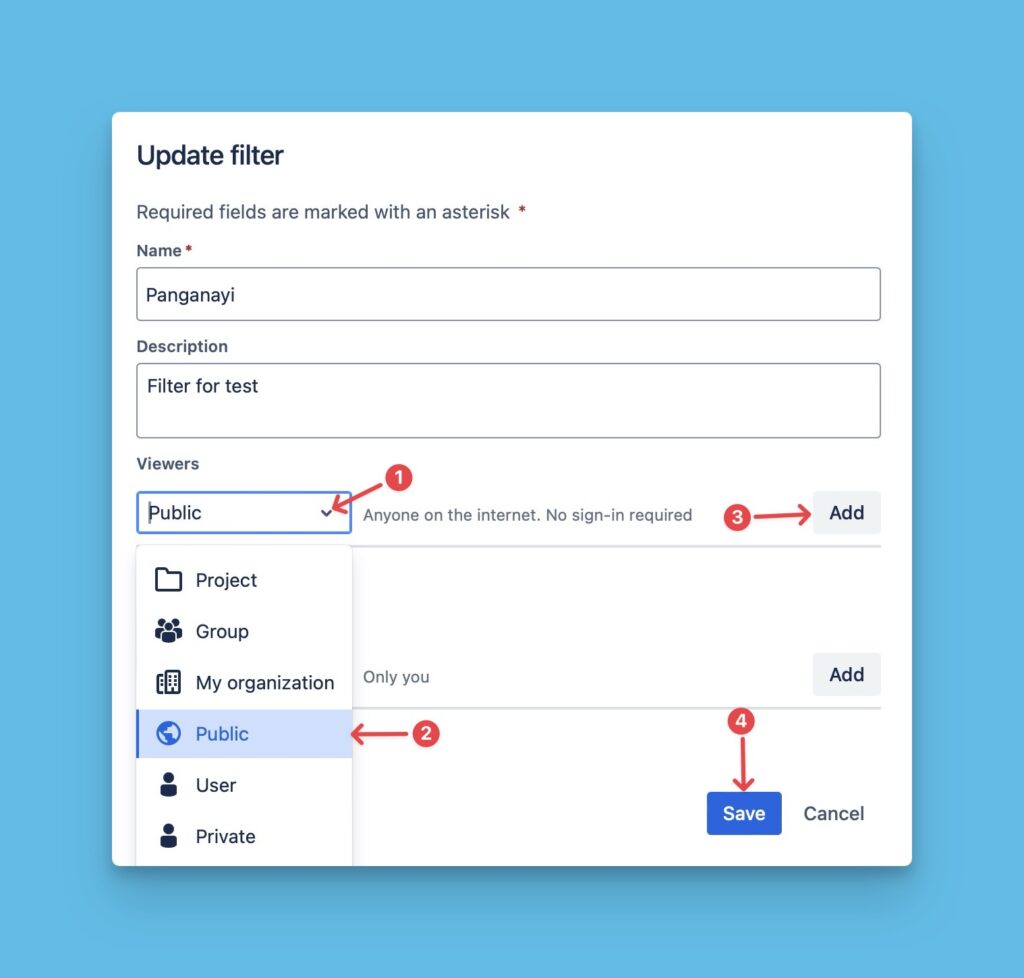
Return to Ducalis and click Refresh Filter List.
Type the filter name—it must become available. Then import your issues.

If you still have problems, please contact us in the chat bottom right.
Editing Jira Filters
Editing Jira filters helps to:
- Import more issues from Jira to the same board.
- Remove issues from a board without removing the integration.
To edit filters:
Head over to Sync settings.
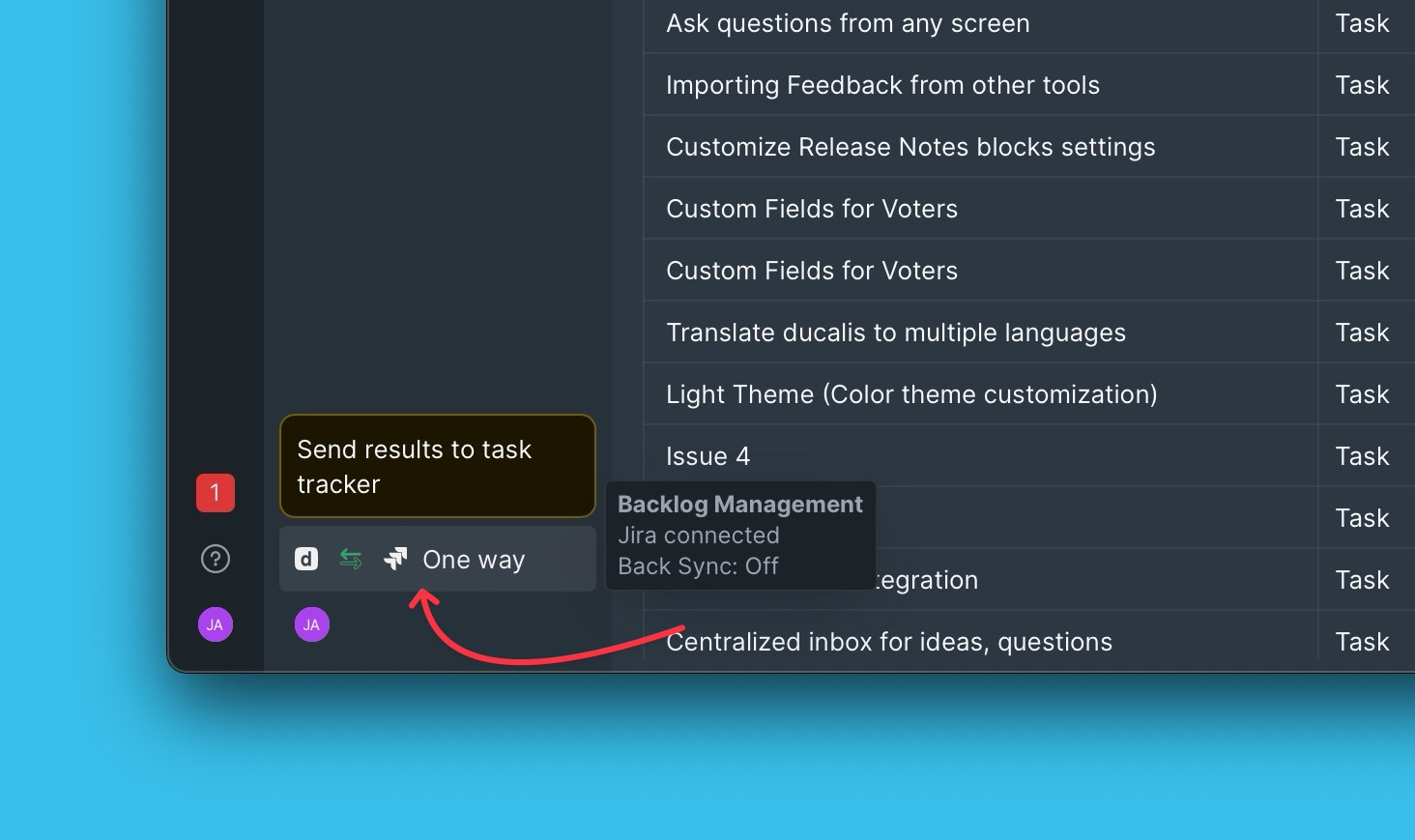
Under Sync settings go to Sync In and click Edit Sync-In Conditions. Click Open filter in Jira to edit the filters in Jira cloud.
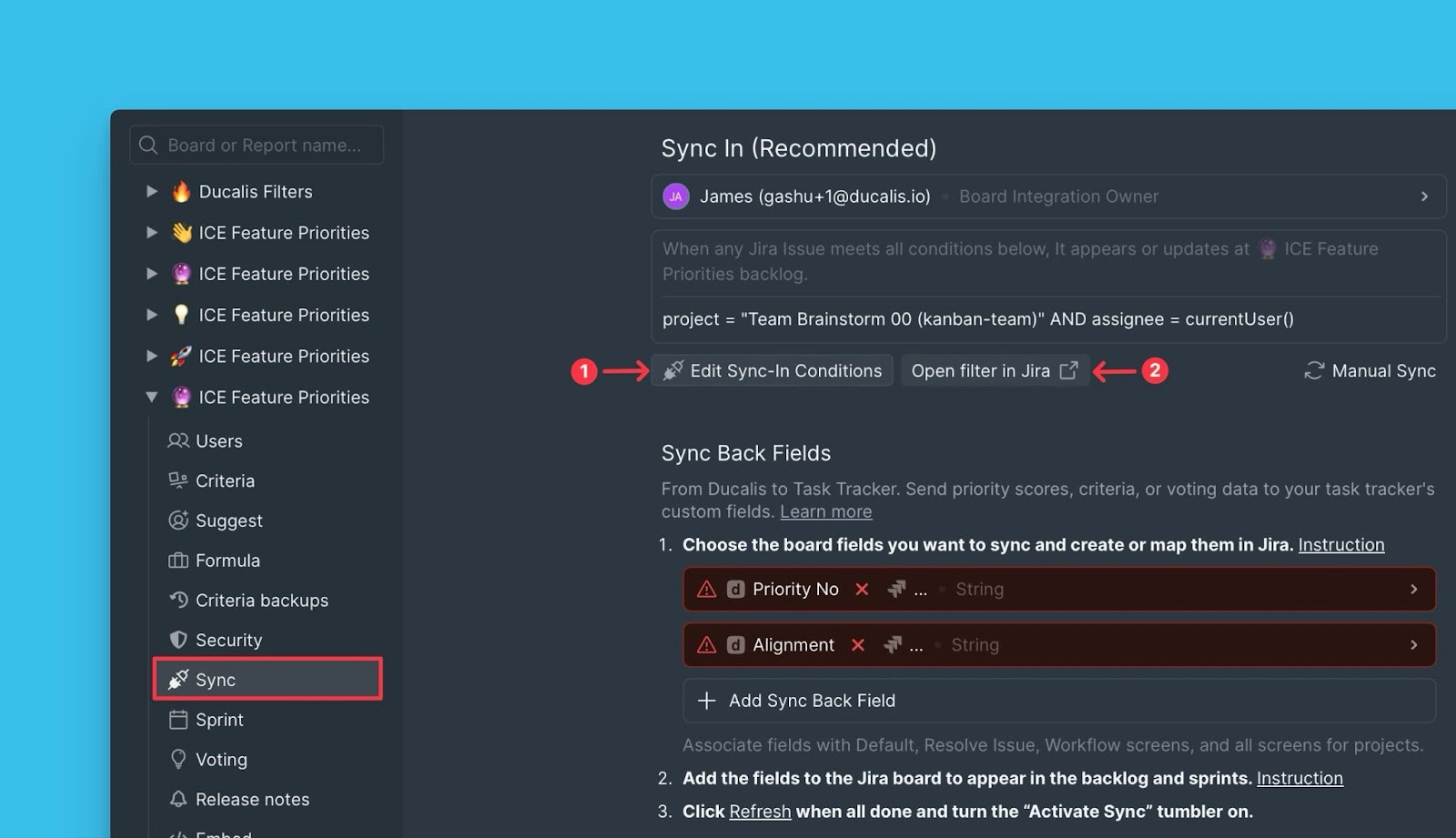
Edit the filters to get the issues you want, then click Save.

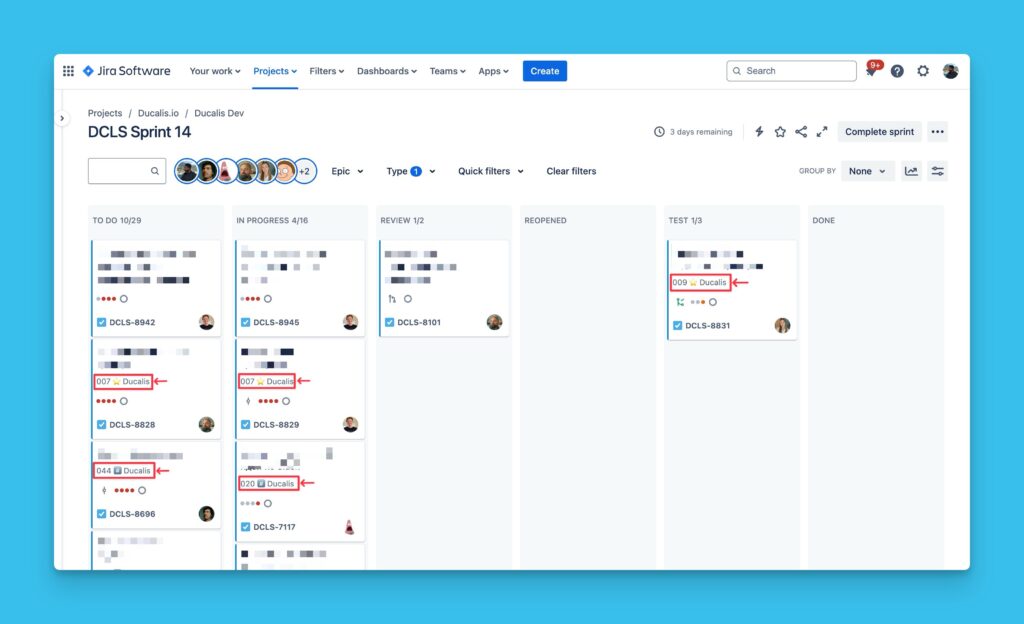
Using JQL Filters
The advanced JQL (Jira Query Language) filters allow you to go deep into your search. Quickly find the issues you want to import from Jira regardless of how they are structured.
When importing issues from Jira Cloud, you can use a saved JQL filter to import specific issues you want to prioritize in Ducalis.
Choose the instance from which you want to import issues. You can:
- Choose from the ones you have already connected.
- Connect a new one. Follow the process of integrating Ducalis with Jira Cloud.

Click Import from [instance] to proceed.
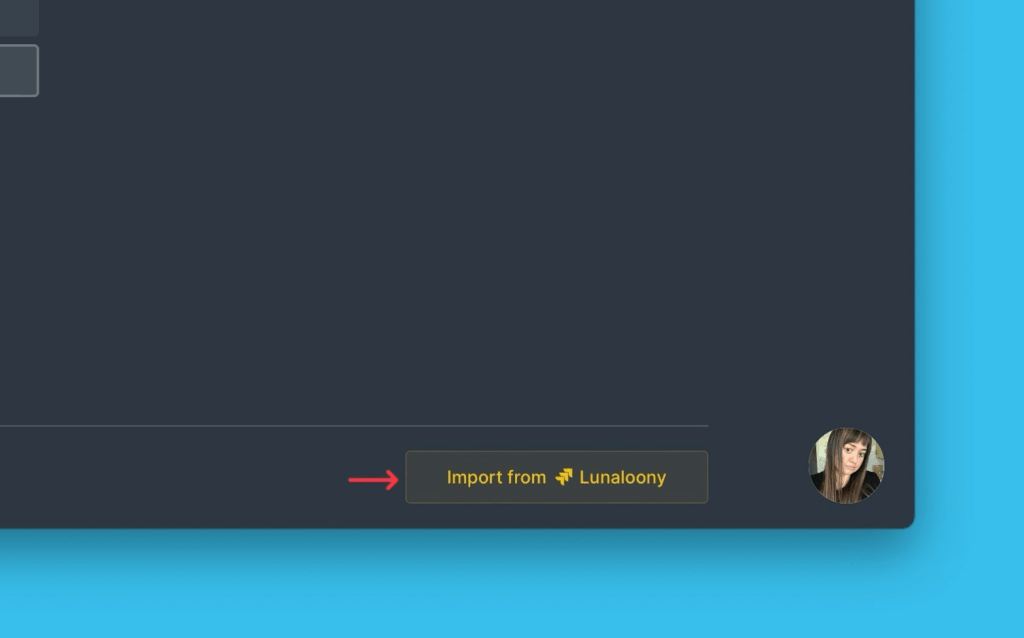
When you reach the Import step, click Select the JQL filters option.
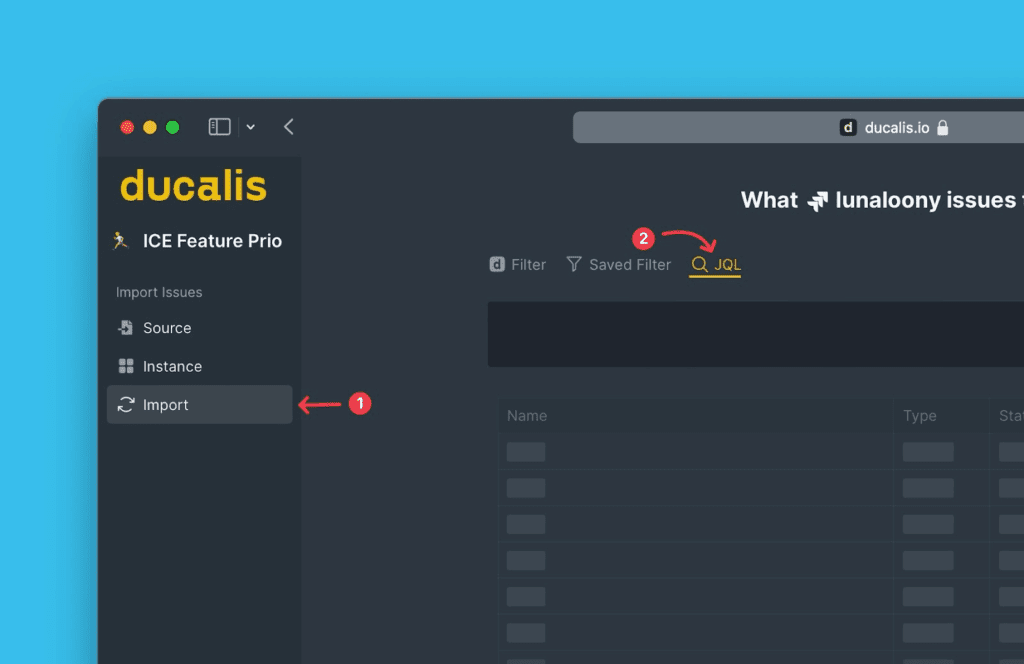
Copy your Custom JQL query from Jira.
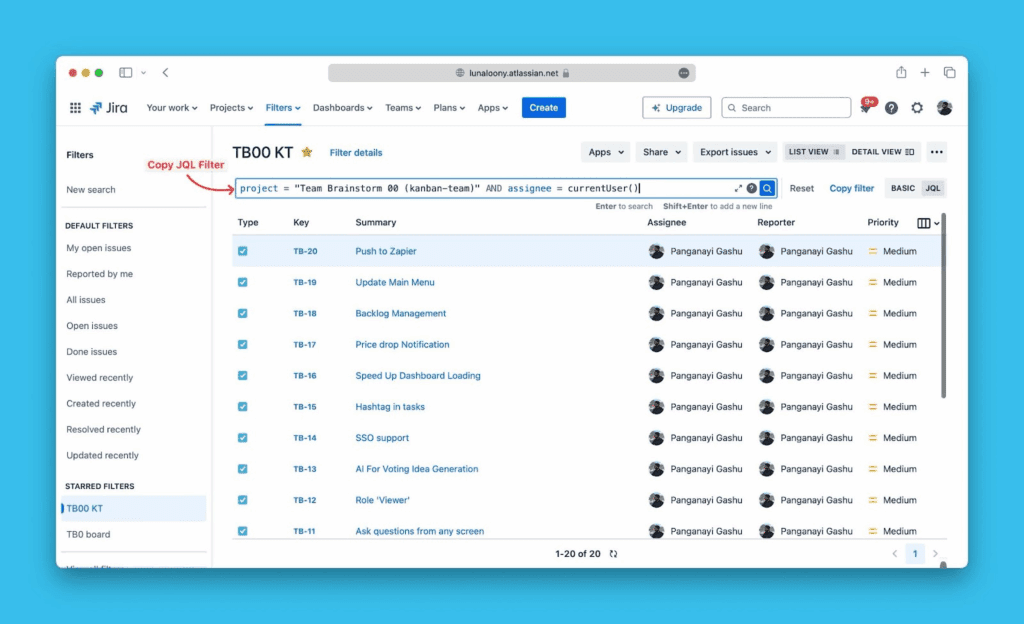
Paste in and Ducalis, then click Get Preview to see the issues under this filter.
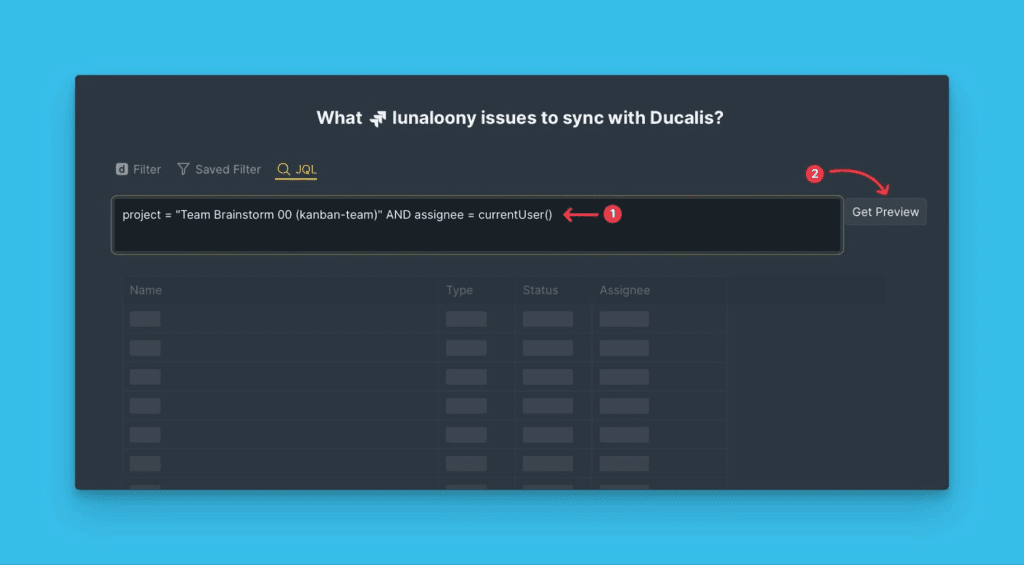
A preview of the issues in the chosen filter.
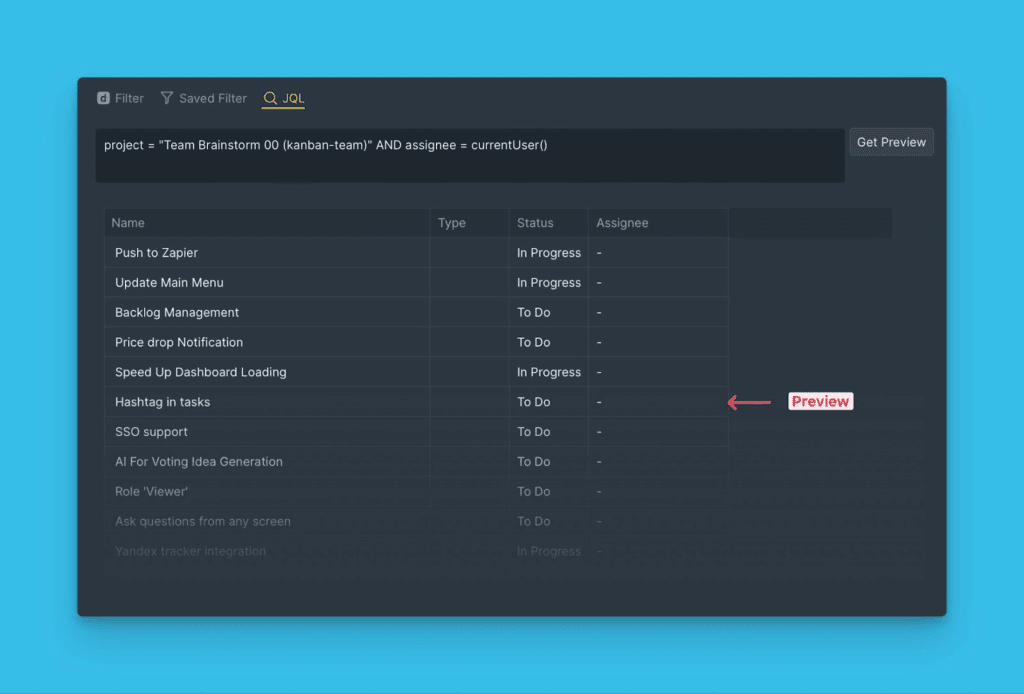
Then click Start import.

Editing The JQL Filter
Editing Ducalis import filters helps to:
- Import more issues from Jira to the same board.
- Remove issues from a board without removing the integration.
Click here to access the Sync settings.
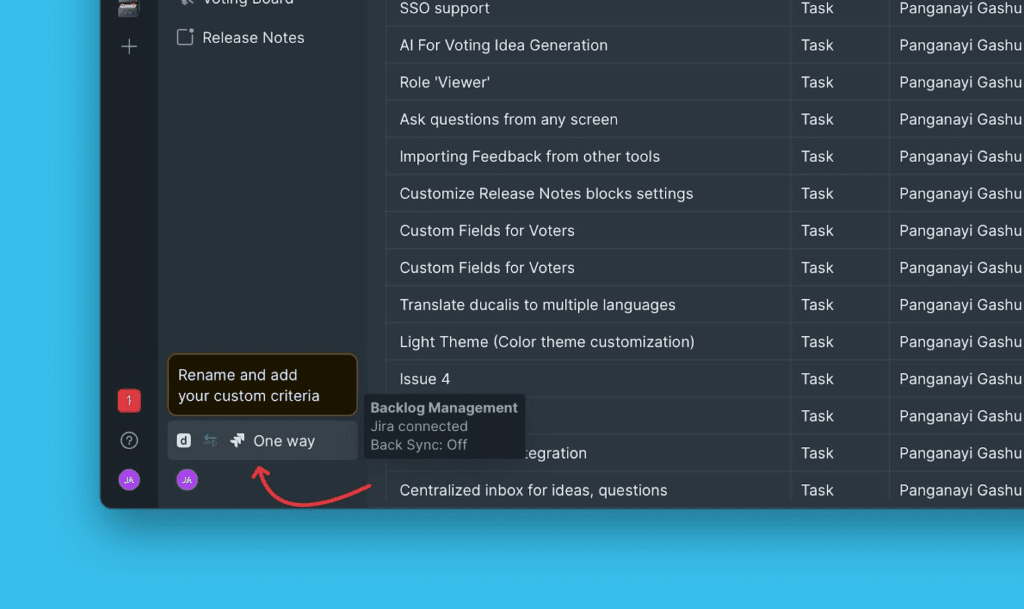
Under Sync settings, click Edit Sync-In Conditions.
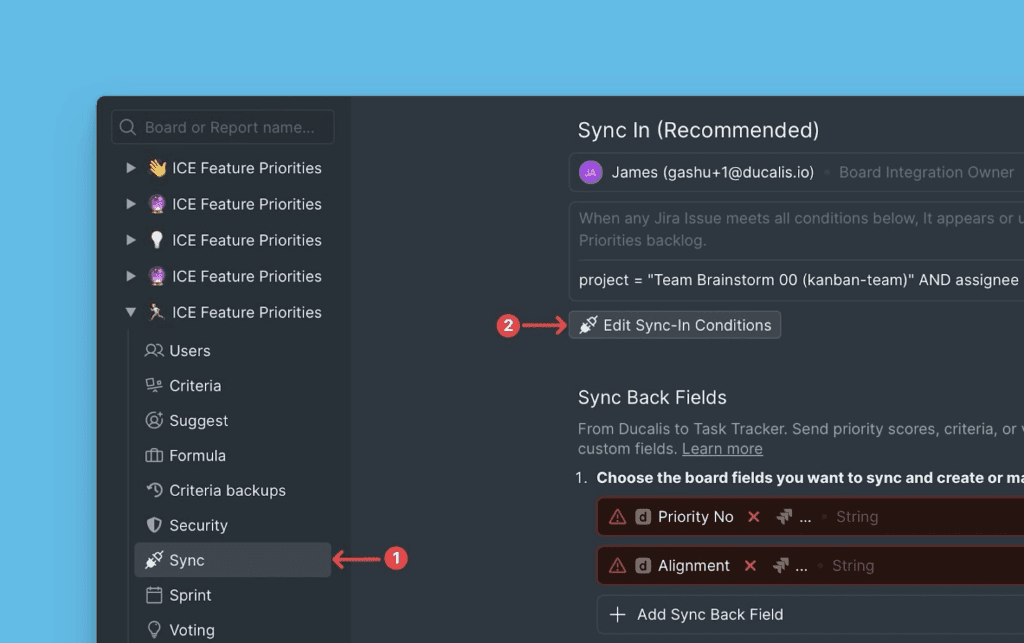
Edit your JQL query and click Save to apply the changes.
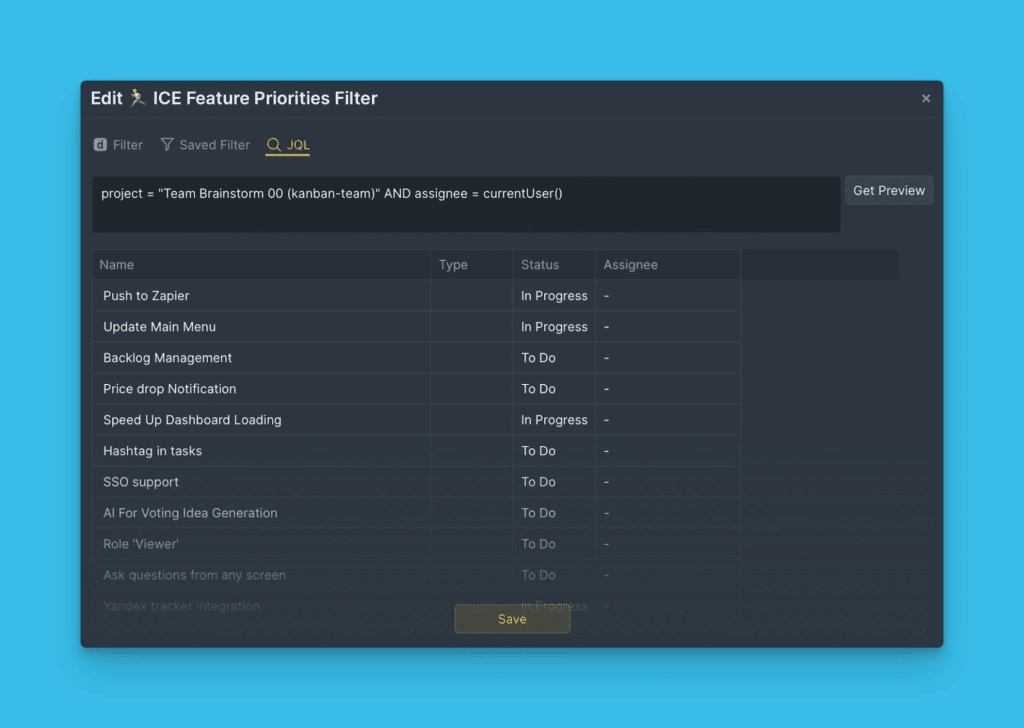
Using Ducalis Filters
Choose the instance from which you want to import issues. You can:
- Choose from the ones you have already connected.
- Connect a new one. Follow the process of integrating Ducalis with Jira Cloud.
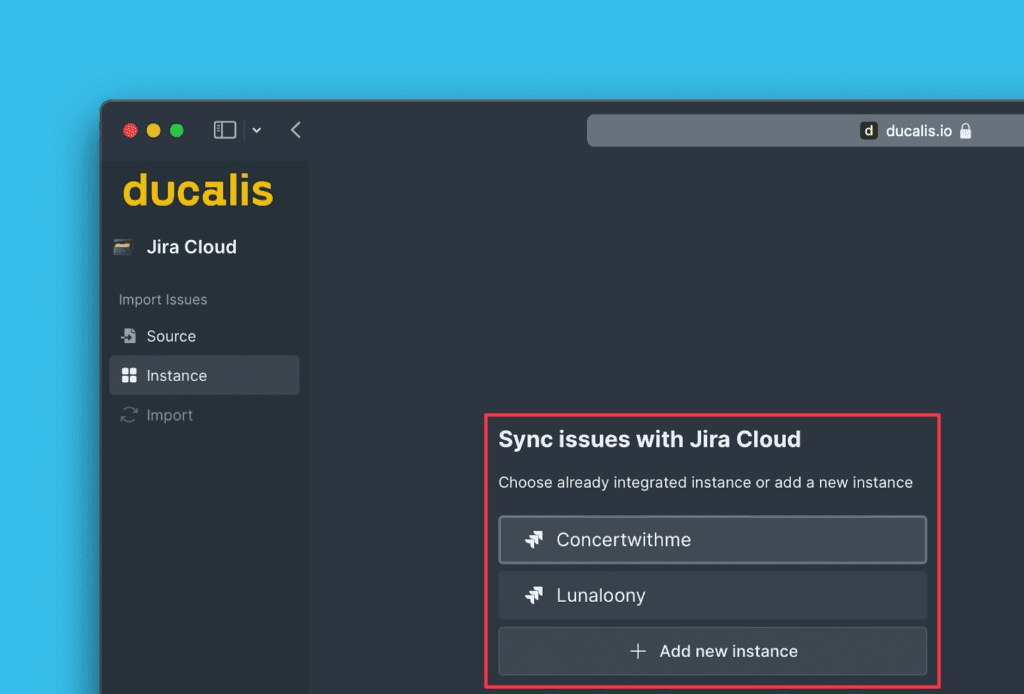
Click Import from [instance] to proceed.
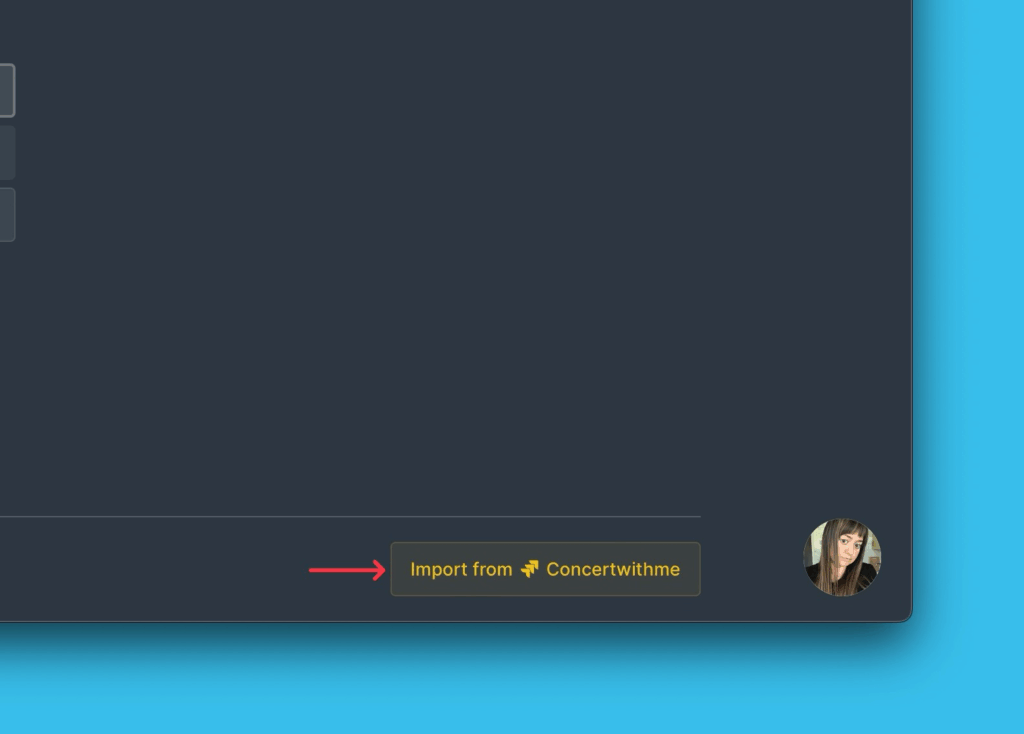
When you get to the Import step, select the Ducalis filters option.

Select your parameters according to which issues you want to filter out. Make sure the required parameters are selected.
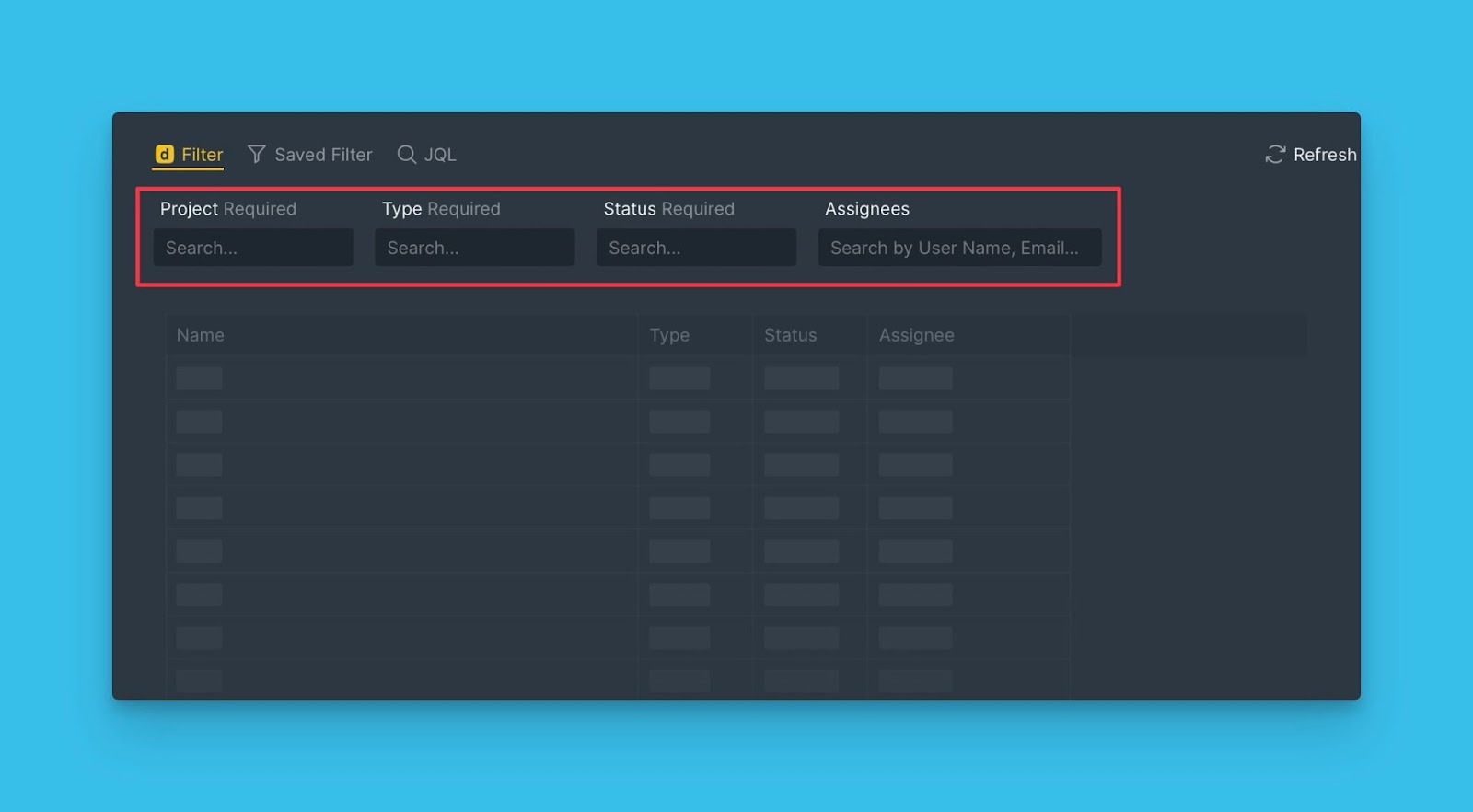
You can see a real-time preview of the issues that fall under your selected parameters.
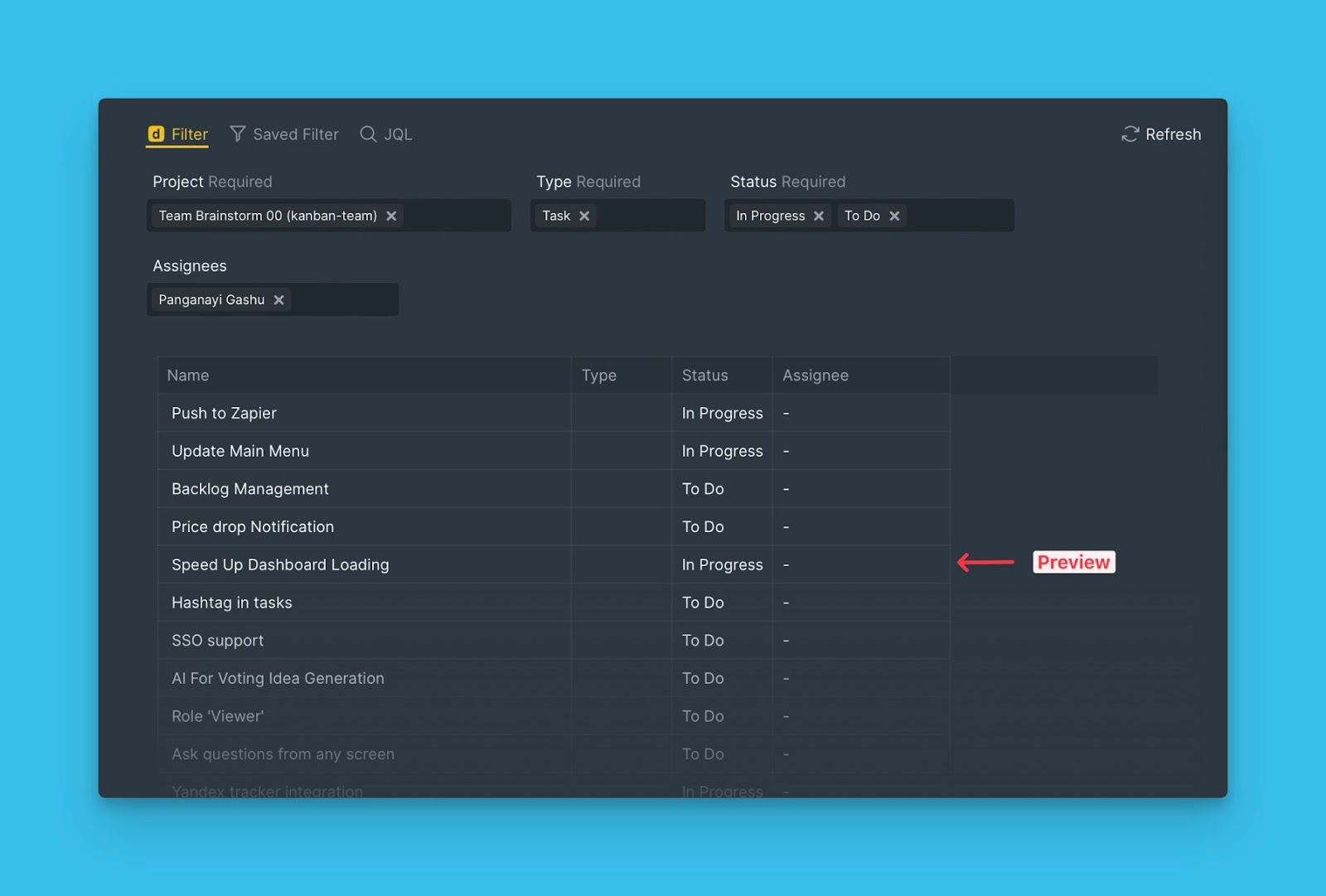
If you cannot see some parameters because of some recent changes you made, you can click Refresh to update the data before looking for them one more time.

Once everything is ready, click Start Import.

Board with issues imported from Jira Cloud.
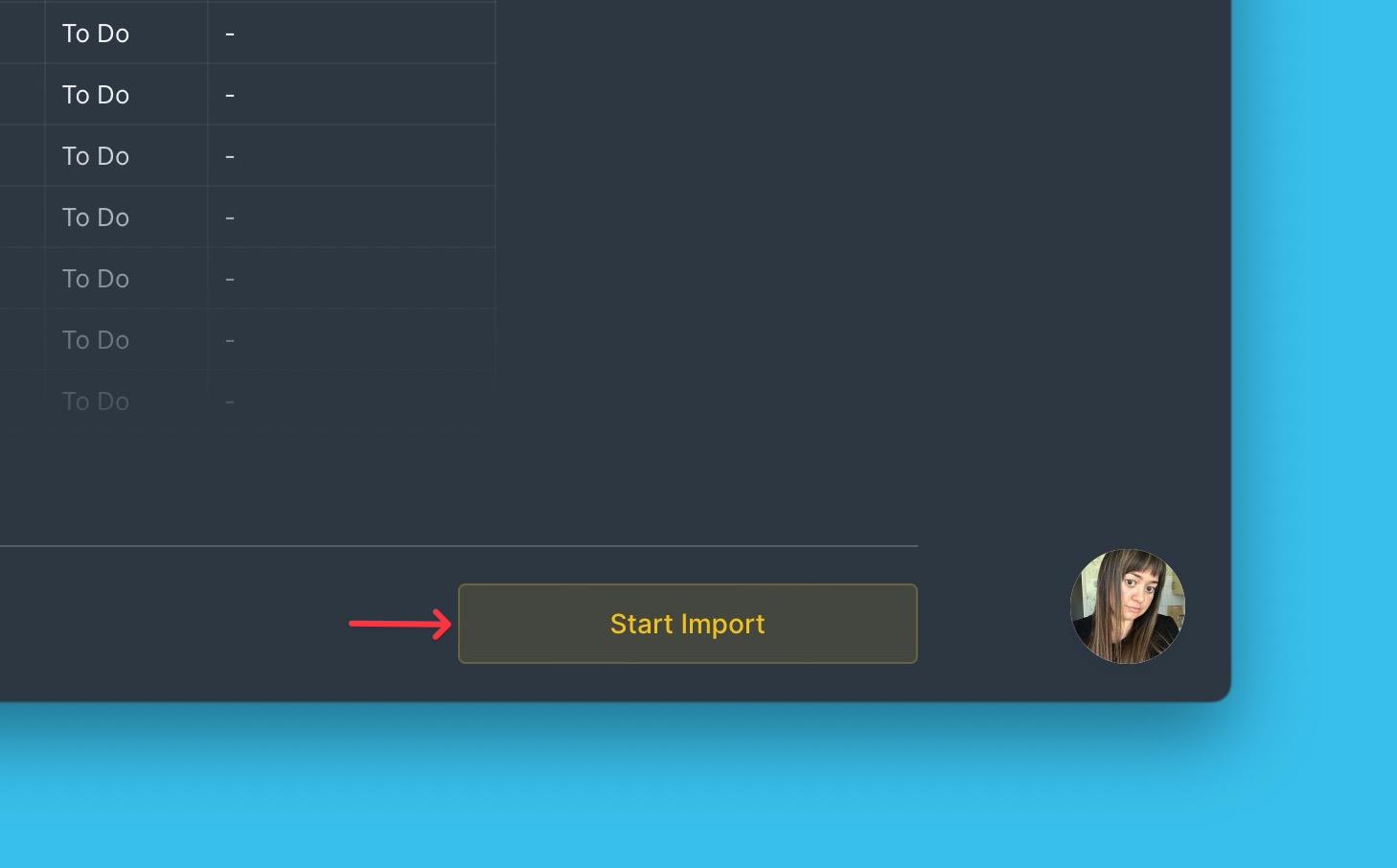
Importing Sub-Tasks
You can import sub-tasks of tasks in a particular project. To do this:
When selecting the import filters, choose the project containing the tasks that have the sub-tasks you want to import.
On Issue type select Sub-tasks. Continue to select the required filters and any optional filters that you want.

You can get a preview of some issues falling under the filters you have selected.
Click Start import.
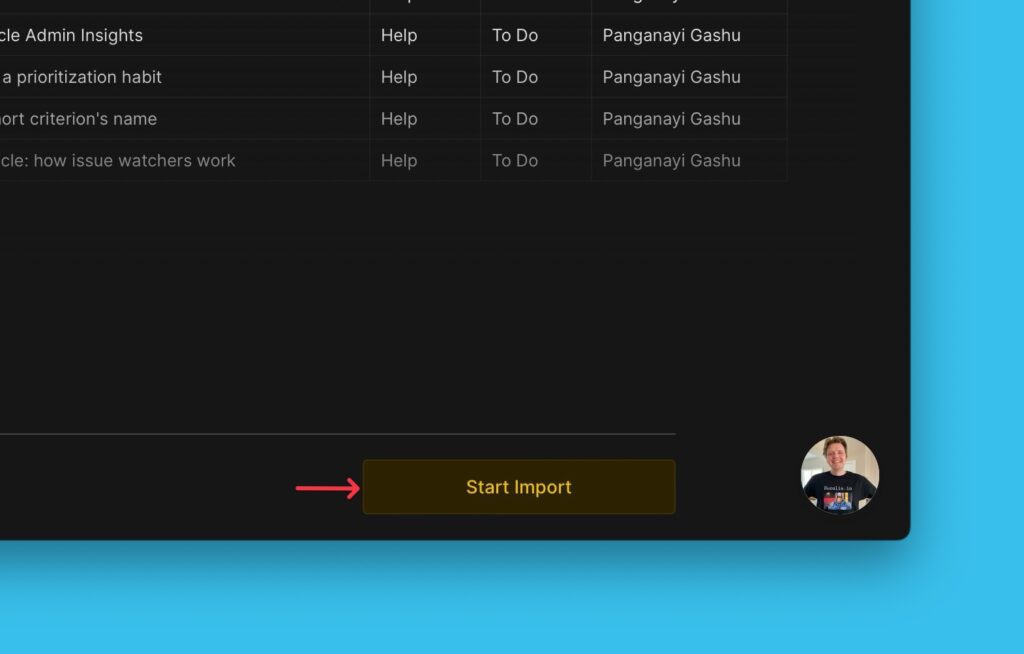
All the tasks together with the sub-tasks will be imported.
On the Issues list, all the sub-tasks will have a sub-task icon on the left.
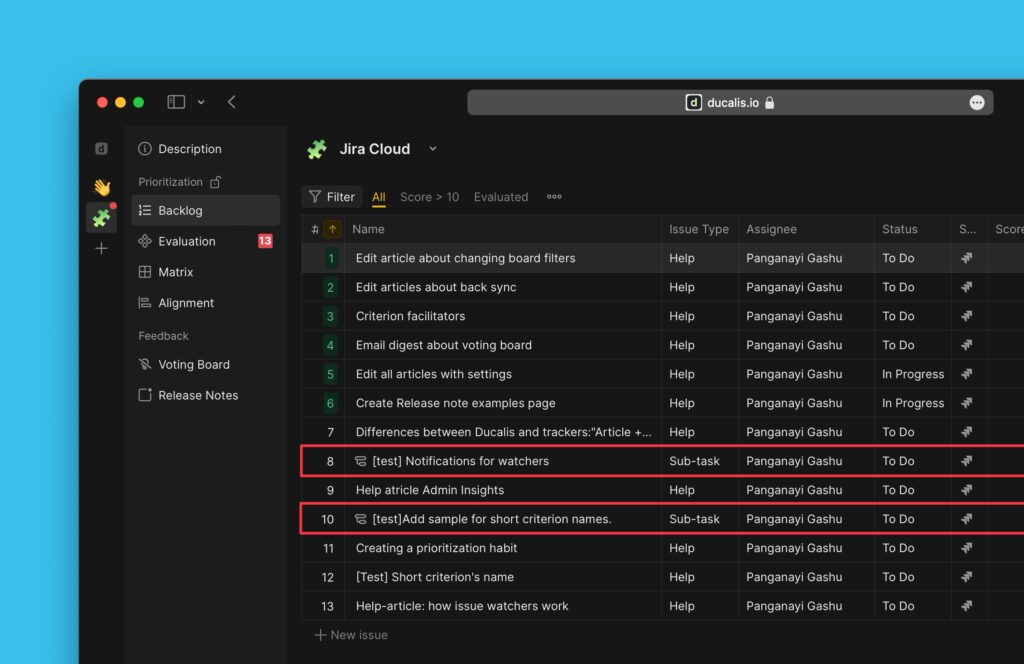
When you open the issue card of a sub-task, you will see the parent-tasks on the top part. You can click on it to be redirected to the parent task in Jira.
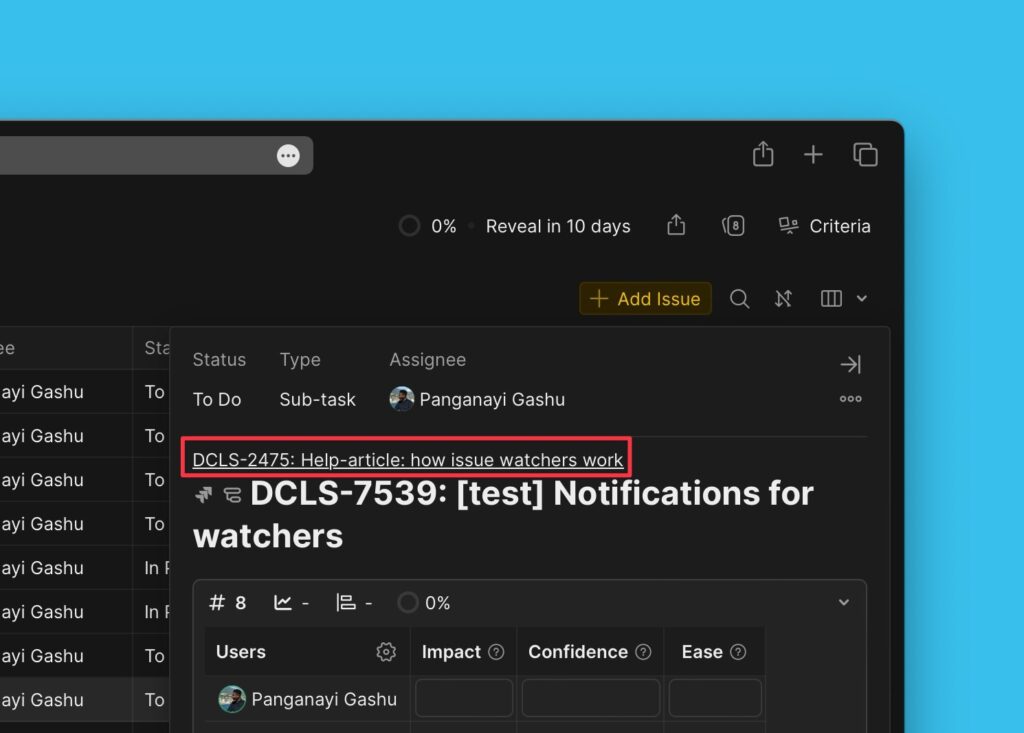
When you open the issue card of a parent task, If it has sub-tasks, you will see them (completed sub-tasks included), and their scores if they were also imported and evaluated.
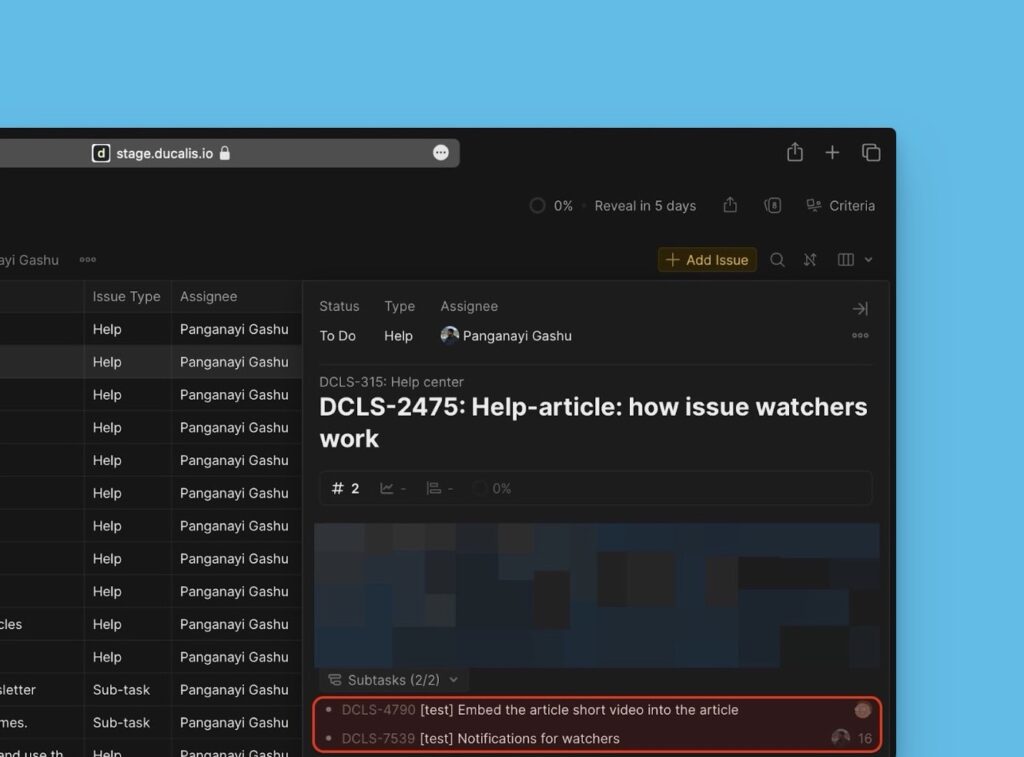
Editing Ducalis Import Filters
Editing Ducalis import filters helps to:
- Import more issues from Jira to the same board.
- Remove issues from a board without removing the integration.
To edit filters:
- Click Sync to access the Sync settings.
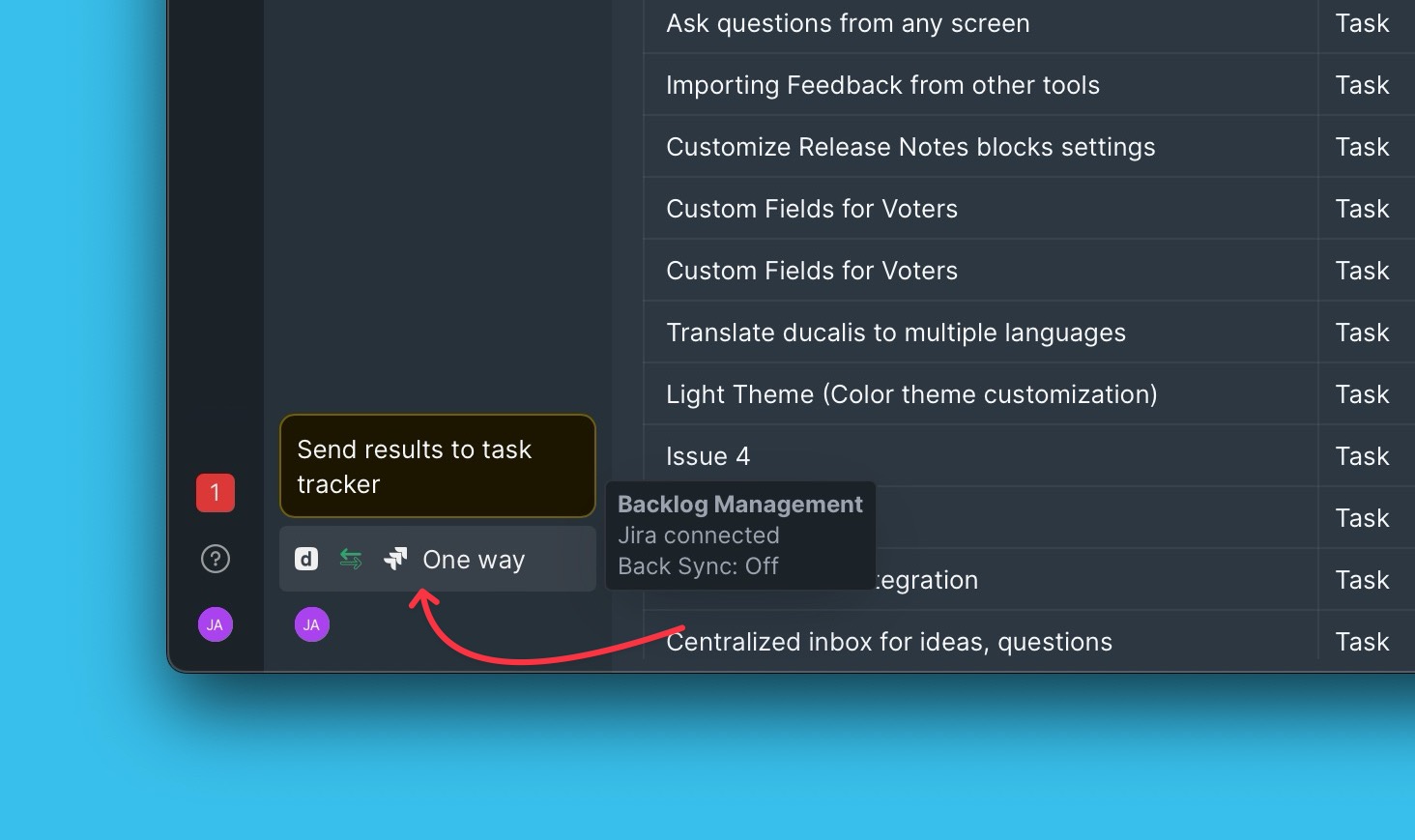
- Under Sync settings go to Sync In and click Edit Sync-In Conditions.
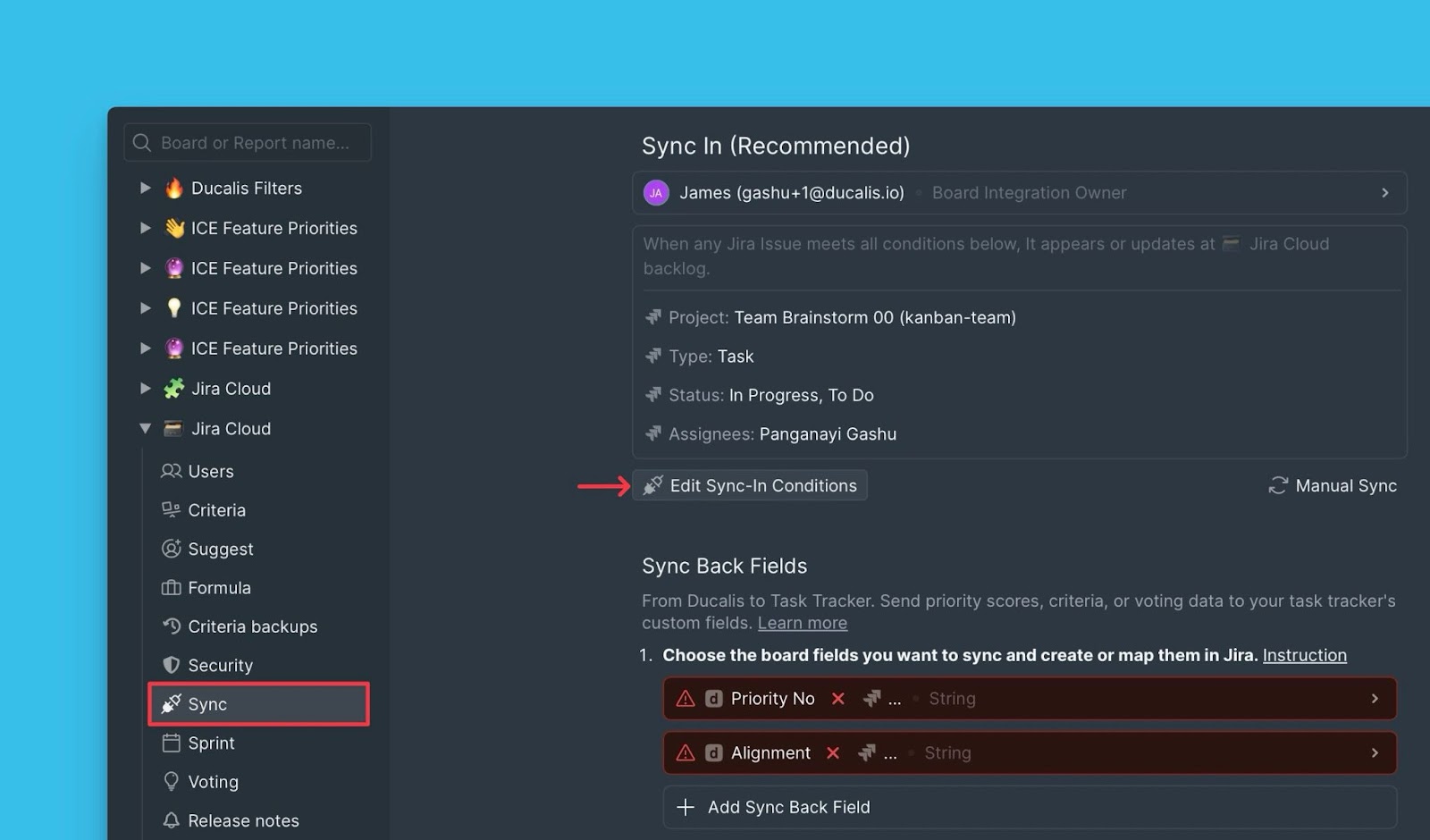
- Edit the filters to get the issues you want, then click Save.

